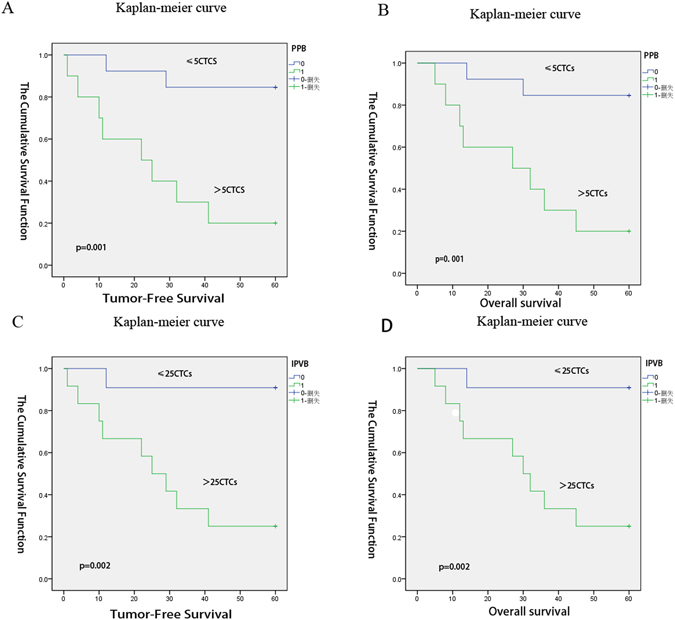Figure 2.

Kaplan–Meier estimates of probabilities of progression-free survival and overall survival in patients with non-small cell lung cancer at the follow-up times*. As shown in panels (A,B,C and D), the follow-up time for the study was 5 years. We defined NSCLC patients with PPB-CTC density >5 CTCs/15 mL as the high-risk group and those with ≤5 CTCs/15 mL as the low-risk group. Panel A shows the probability of TFS according to the PPB-CTCs; the median TFS was 22.0 months for high-risk patients and >60 months for low-risk patients, p = 0.001 via the log-rank test; Panel B shows the probability of OS according to the PPB-CTCs; the median was 27.0 months for high-risk patients and >60 months for low-risk patients, p = 0.001 via the log-rank test. Using the IPVB specimens, we defined the patients with IPVB-CTC density > 25 CTC/15 mL as the high-risk group and those with IPVB-CTC density ≤25 CTCs/15 mL as the low-risk group. Panel C shows the probability of TFS according to the IPVB-CTCs; the median was 25.0 months for high-risk patients and >60.0 months for low-risk patients, p = 0.002 via the log-rank test. Panel D shows the probability of OS according to the IPVB-CTCs; the median was 30.0 months for high-risk patients and >60.0 months for low-risk patients, p = 0.002 via the log-rank test. Abbreviations: TFS: tumor-free survival; OS: over-survival; PPB-CTCs: peripheral blood circulating tumor cells; IPVB-CTCs: pulmonary venous blood circulating tumor cells.
